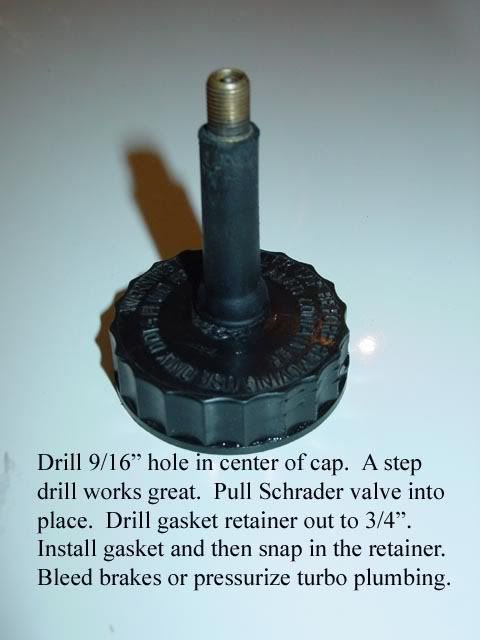|
The method cited in the Volvo is a kind of leakdown test, and is very helpful in finding leaks.
Basically, it uses a cap to the overflow reservoir that has a hose coming out of it with a pressure gauge and a stopcock (ball valve or other type of valve), and a fitting to apply pressure with a pump.
I'm sure it costs a lot to buy, but it is possible to make one. I did this using an old radiator cap, some 1/4" plastic hose, a pressure gauge & ball valve and some compression fittings.
I use a bicycle pump to pressurize the system to ~23psi for the 150 kPa 960 system, then close the stopcock and observe the leakdown.
If you observe leakdown, then you try to find the leaks. With the car cold, it's a lot easier to identify these. You fix all the ones you find and not the effect on leakdown. There will always be some leakdown. If you can get it down to a couple of psi in the span of a few minutes, then you're doing pretty good.
It helps to do this when it's nice and quiet as you must listen for any leaks, like at the cap itself. Since there's not much air in the system, it doesn't take much volume escaping to lower the pressure a couple of psi.
Once you've fixed all of the visible leaks you can find, if you've still got coolant loss, then you start looking into the possibility of head gasket seepage. This is done with a chemical test for the presence of exhaust gases in the coolant system. This is also a very sensitive test; very small amounts of reducing exhaust gases will cause a color change in the chemical indicator. So much so that 'false' or questionable positives are often a concern.
As head gasket seepage gets worse, it will usually cause some misfiring in the morning on cold starts as coolant will have seeped into one or more cylinders overnight and will cause misfiring and uneven running for a short duration immediately after starting. One usually waits until this happens before they start thinking about taking the head off.
In your case, if there was still coolant loss after fixing all the visible leaks, I would think about using some BarsLeaks in the system before I would even think about taking the head off. I've used the dark liquid orignal BarsLeaks in various Mercedes & Volvo engines without problems. It can be quite effective on small leaks like you describe.
It is best though to start with troubleshooting/fixing all the visible leaks first. These will be all the hose interfaces and fittings around the motor; top, sides, back & bottom.
|





